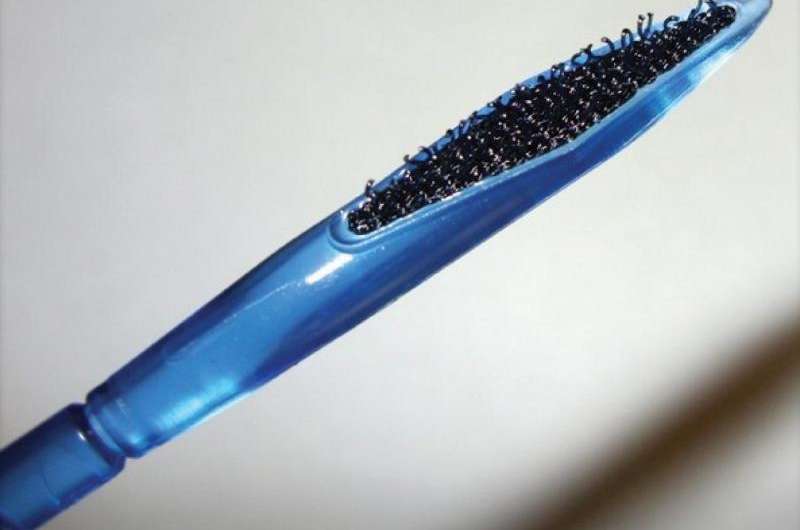Physicians evaluate new device to test for cervical cancer

When a woman has an abnormal pap smear she usually undergoes colposcopy, the procedure physicians use to closely examine the cervix, vagina and vulva for signs of disease. Typically a metal instrument is used to obtain a small sampling of cells inside the cervix – a procedure that is oftentimes painful for the patient and does not consistently give good results.
Justin T. Diedrich, M.D., a clinical faculty member in the School of Medicine at the University of California, Riverside, and two colleagues have now tested an alternative device manufactured by Histologics LLC, a company that innovates different approaches to tissue sampling. Called fabric-based endocervical curettage, the new device uses a fabric hook, such as the hooks found on the rough side of Velcro, to do the sampling instead of the standard metal scraping device. The hook simultaneously biopsies, traps, and stores the tissue for transport to the lab.
"We found that the new fabric devices had significantly fewer 'inadequate' specimens—meaning, patients did not need to return for repeat biopsies," said Diedrich, an assistant clinical professor in obstetrics/gynecology and family planning. "This new device means that patients will get better results, with fewer patients needing repeat biopsies, which can increase patient satisfaction."
In the study, published in the Journal of Lower Genital Tract Disease, Diedrich and his colleagues sampled a group of 81 physician and nurse colposcopists who switched from the old-school metal version of endocervical curettage (January 2010-July 2011) to the new fabric-based version (September 2011-October 2013). The researchers looked at the pathology lab results both before and after the switch took place.
"Minimally-invasive office procedures for evaluating the outside of cervix have been around for at least 10 years, but this is the first product to evaluate the inside of the cervix with such ease," Diedrich said.
He explained that the standard way of performing cervical biopsies may not give very many cells. The procedure can be painful because the instrument is sharp, which may make the physician not scrape as hard.
"The new device, on the other hand, is not sharp and removes the appropriate amount of cells while minimizing discomfort," he said. "Because the biopsy gets more tissue, it is able to find more precancerous cells. This could be the difference between intervening early before someone develops cancer and waiting until it has grown larger."
When applied to tissue with pressure, the fabric hook flexes downward exposing the hook tip to the tissue face when rotated or agitated on the tissue surface. A colposcopist clinician is not required to handle the specimen and clean biopsy devices, thus reducing the risk of contamination.
"Innovation can make medicine work better and more efficiently," Diedrich said. "In this case, innovation is making colposcopy less painful, gets a larger biopsy, and improves the detection of abnormal cells."
Histologics LLC paid for the institutional review board process. The company had no say in the analysis, manuscript, or results.
"Whenever someone has an abnormal pap smear she should speak with her doctor about what the management options are," Diedrich said. "If the patient needs a colposcopy to have her cervix looked at more closely, she should ask about ways to minimize discomfort."
More information: Justin T. Diedrich et al. Comparison of Tissue Yield Using Frictional Fabric Brush Versus Sharp Curettage For Endocervical Curettage, Journal of Lower Genital Tract Disease (2017). DOI: 10.1097/LGT.0000000000000324


















